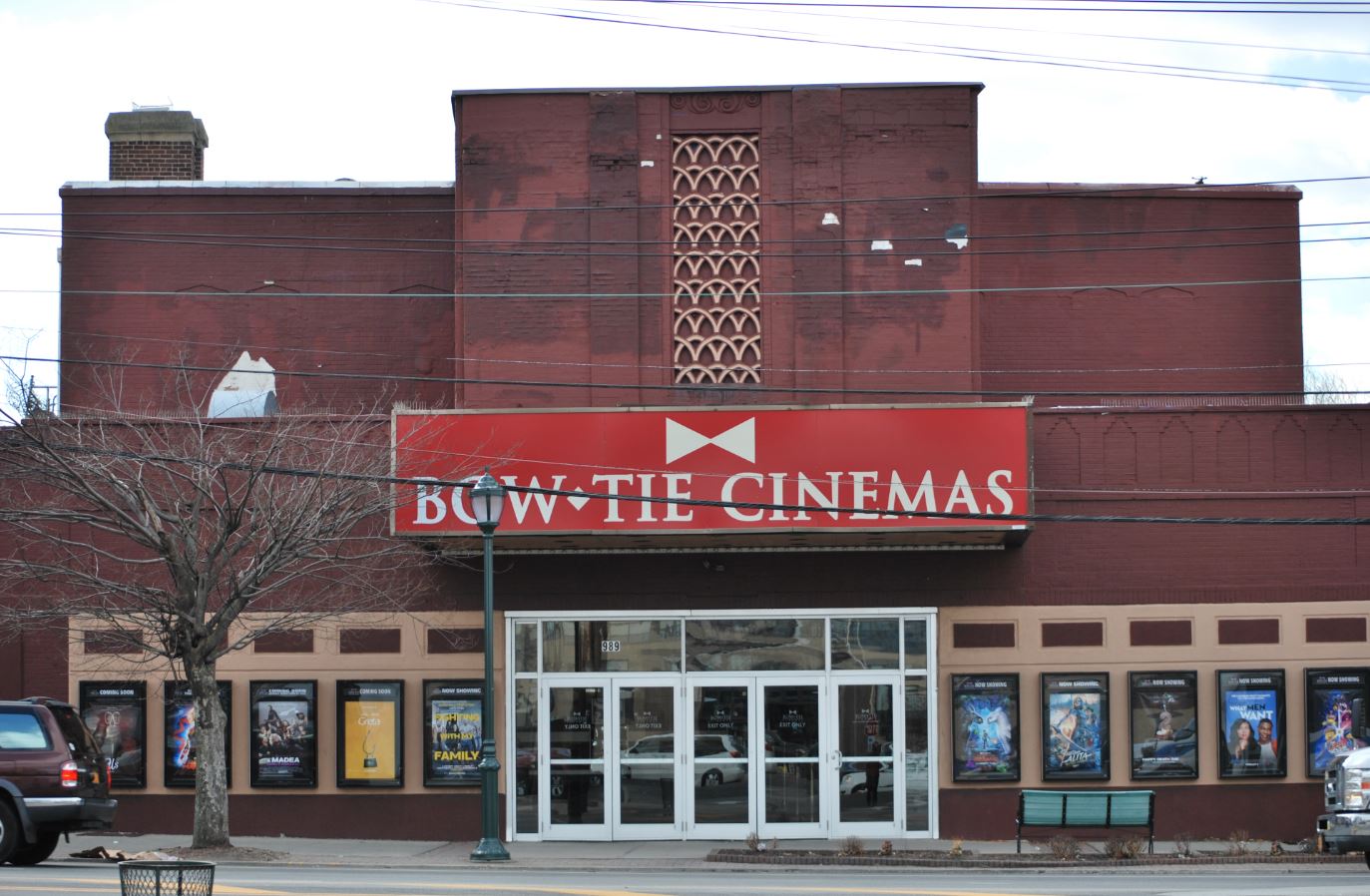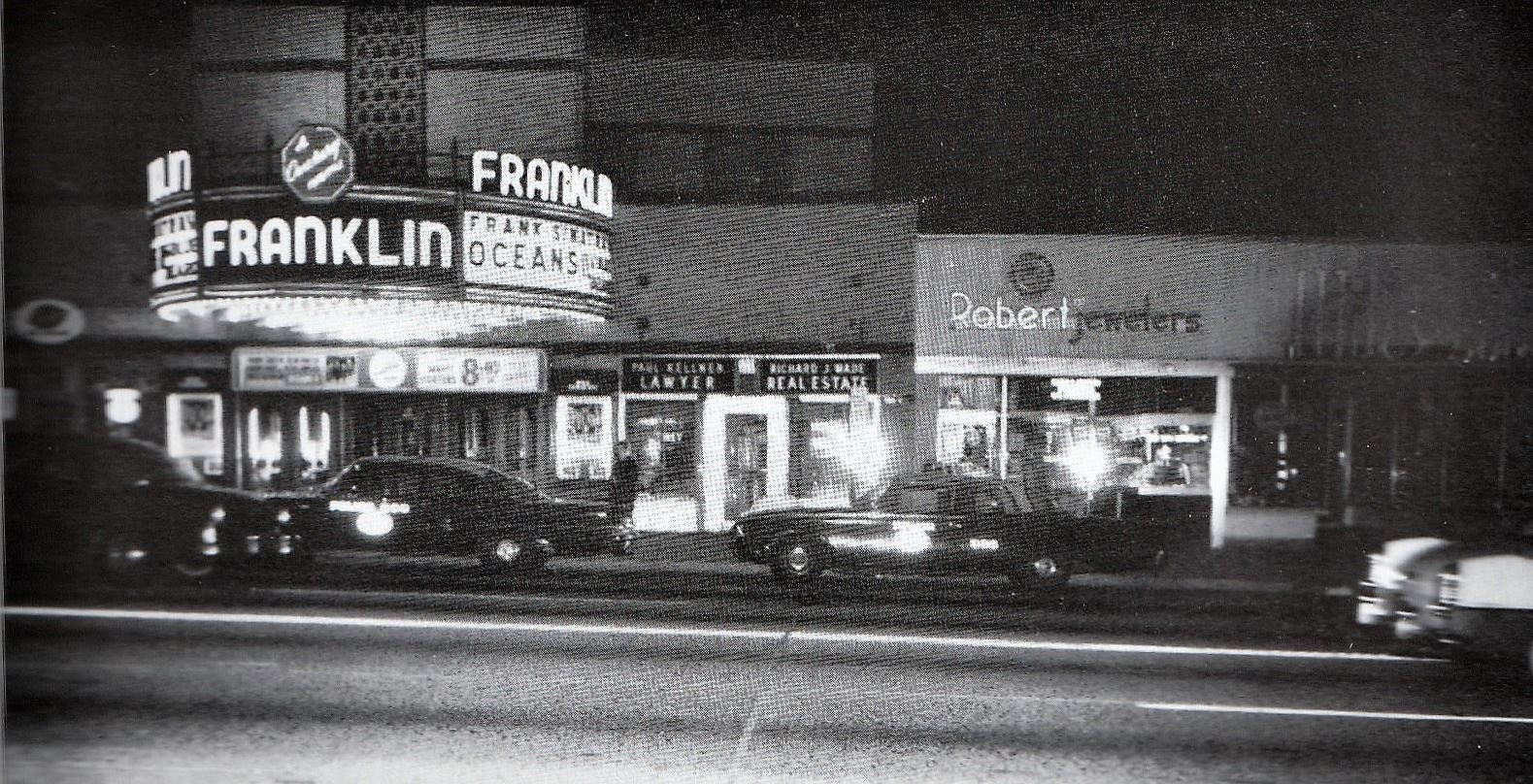Preservation Long Island is pleased to welcome guest blog contributor Katherine Tarascio, a Franklin Square resident and independent scholar working in partnership with the Franklin Square Civic Association to raise awareness in support of town landmark designation for the Franklin Theater (aka Bow Tie Franklin Square Cinemas). Edited by Sarah Kautz, Preservation Director, Preservation Long Island.

Located on Hempstead Turnpike in the heart of Franklin Square’s historic downtown business district, the Art Deco-style Franklin Theater has served its community for more than eighty years. Although some insensitive alterations and neglect partly conceal its original Art Deco grandeur, the Franklin Theater remains an important architectural, cultural, and historic community resource. In light of the site’s significance, Hempstead Town’s Landmarks Preservation Commission voted unanimously on February 26, 2019, to recommend it for designation as a town landmark. The nomination for landmark designation must now go before the Hempstead Town Council for approval and a public hearing is scheduled to be held at 10:30 AM on Tuesday, September 3, 2019, at Hempstead Town Hall. Landmark designation would protect The Franklin from demolition and insensitive redevelopment, helping to preserve Franklin Square’s strong sense of place.


When the theater first opened in 1933, the transformation of Franklin Square from farmland into a modern suburban community was well underway. A trolley line connected the area with New York City via the railroad by 1920, and the hamlet’s water district was established in 1921. Sanitation and streetlights followed during the early 1930s along with new schools to accommodate the population boom throughout the 1920s into the 1930s. Meanwhile, developers purchased rural plots where they constructed suburban family homes. In the middle of this new suburban community appeared the perfect place to build a sleek modern movie house—and that’s exactly what Abraham H. Schwartz (1884–1938), an influential “theater man,” envisioned on an empty lot he acquired on Hempstead Turnpike in 1925 between what is now Franklin Avenue and William Avenue.
Schwartz, who built movie houses across geographic Long Island, prided himself on constructing thoroughly modern fireproof theaters furnished with the latest cinema equipment. During the 1930s, Schwartz commissioned theater designs from R. Thomas Short, a prolific New York architect known for imaginative works like the French Renaissance-style Alwyn Court Apartments in Manhattan and the Eclectic Moorish Revival-style Kismet Temple (1910) in Brooklyn. Many of Short’s buildings are now listed on the National Register of Historic Places and designated as historic landmarks of the City of New York. Although plans for Franklin Theater began as early as 1925, the arrival of the Great Depression delayed its completion. Nevertheless, Franklin Square’s Art Deco-style movie house opened in October 1933—just in time for Hollywood’s Golden Age.

Today the two-story Franklin Theater is flanked by single-story postwar storefronts on Hempstead Turnpike at the commercial center of Franklin Square. The theater remains a major feature within the wider setting of the hamlet’s historic downtown in addition to the Franklin National Bank two blocks to the east, the Plattduetsche Home four blocks to the west, and St. Catherine of Sienna Roman Catholic Church one block to the north. With its original exterior largely intact, The Franklin appears to be the last historic Art Deco-style movie house in Hempstead Town and one of only a few historic theaters to survive demolition or extensive alterations.
Without the protection town landmark designation provides, the town and hamlet risk losing a significant piece of our shared past. Landmark status would also encourage the restoration of this unique historic resource, which has enormous potential to boost downtown revitalization efforts in Franklin Square. For example, the award-winning restoration of the Suffolk Theater in Riverhead, NY—another historic Century Circuit movie house by Schwartz and Short that opened just two months after The Franklin in December 1933—has played a key role in the revitalization of its surrounding community and commercial center.
If you live or work in the Town of Hempstead, please help preserve this special place for future generations by asking the Hempstead Town Supervisor and your Hempstead Town Councilmember to support town landmark designation (and restoration) for the Franklin Theater.





